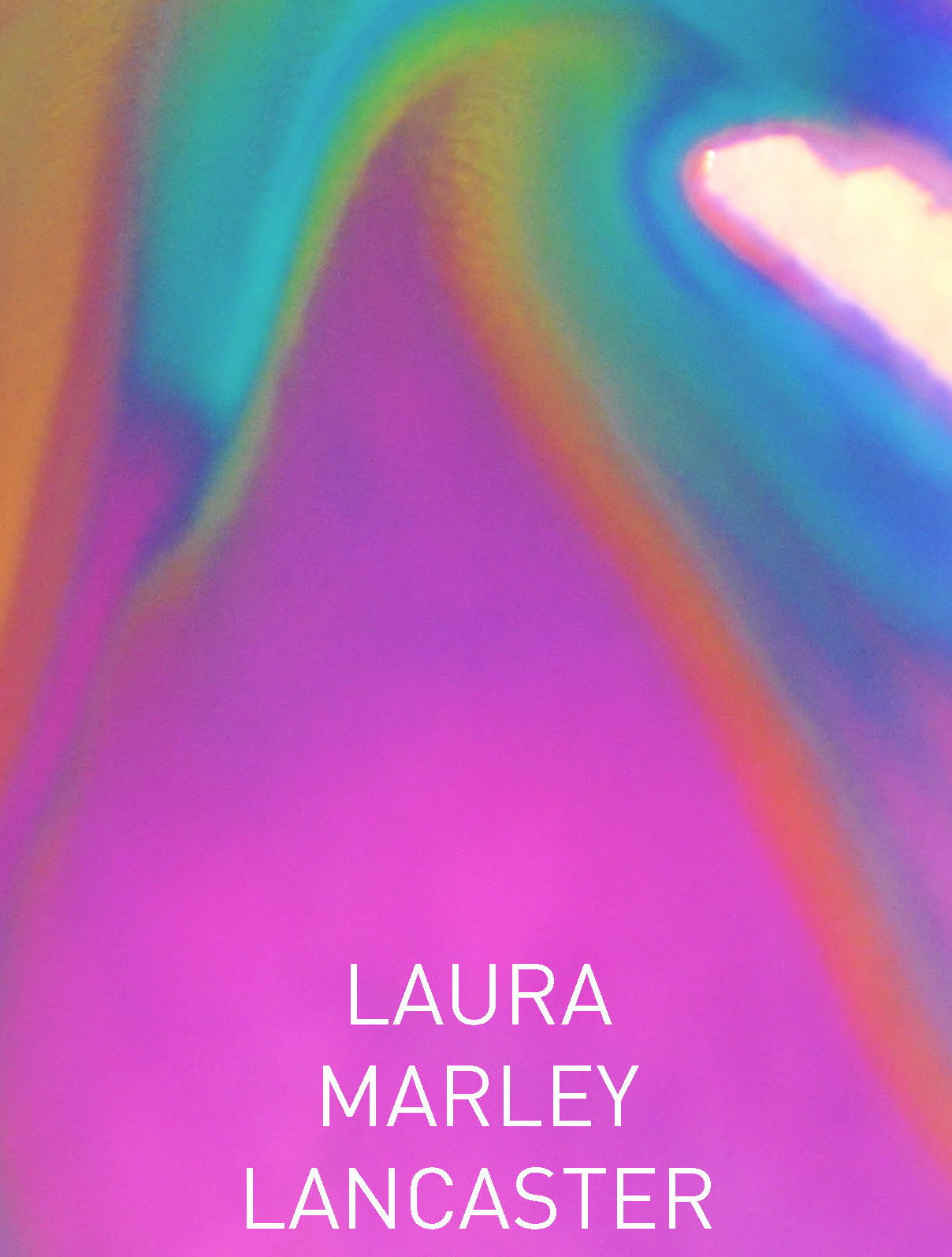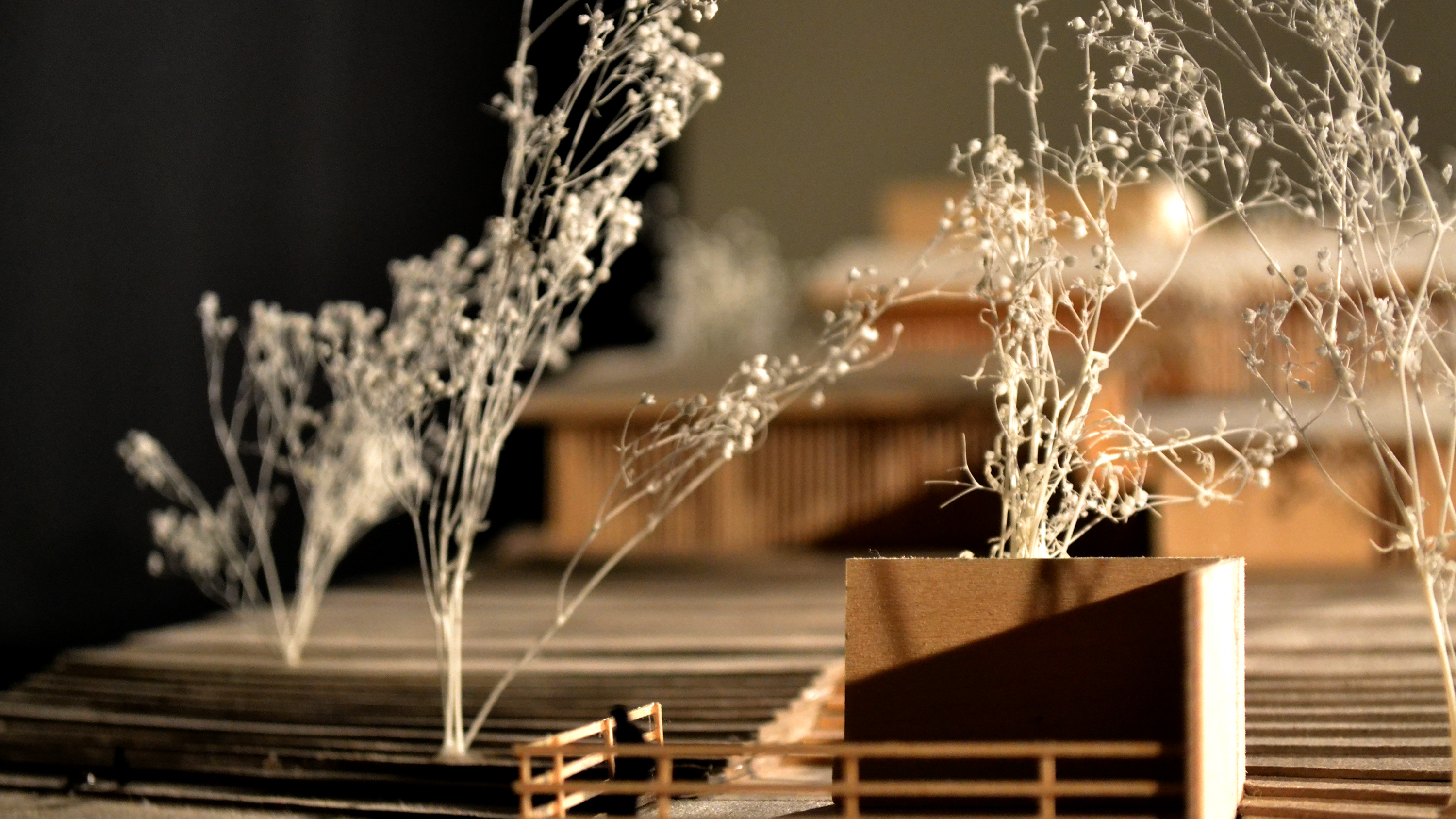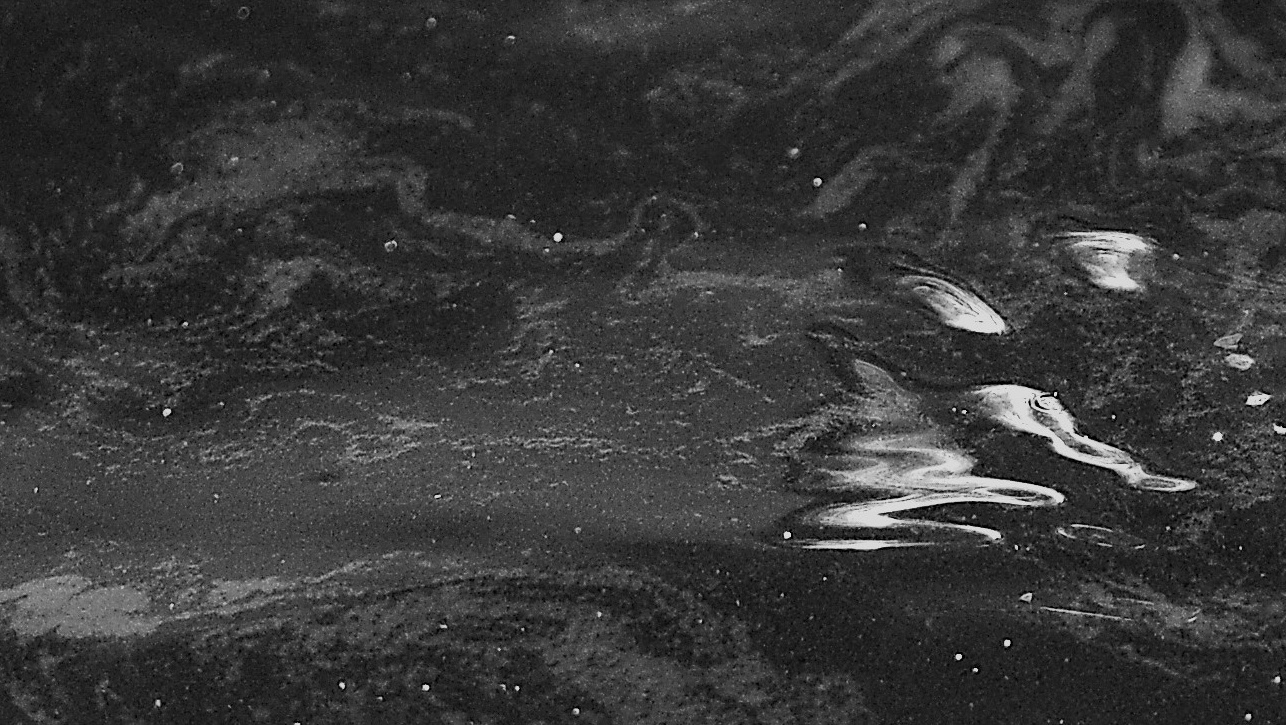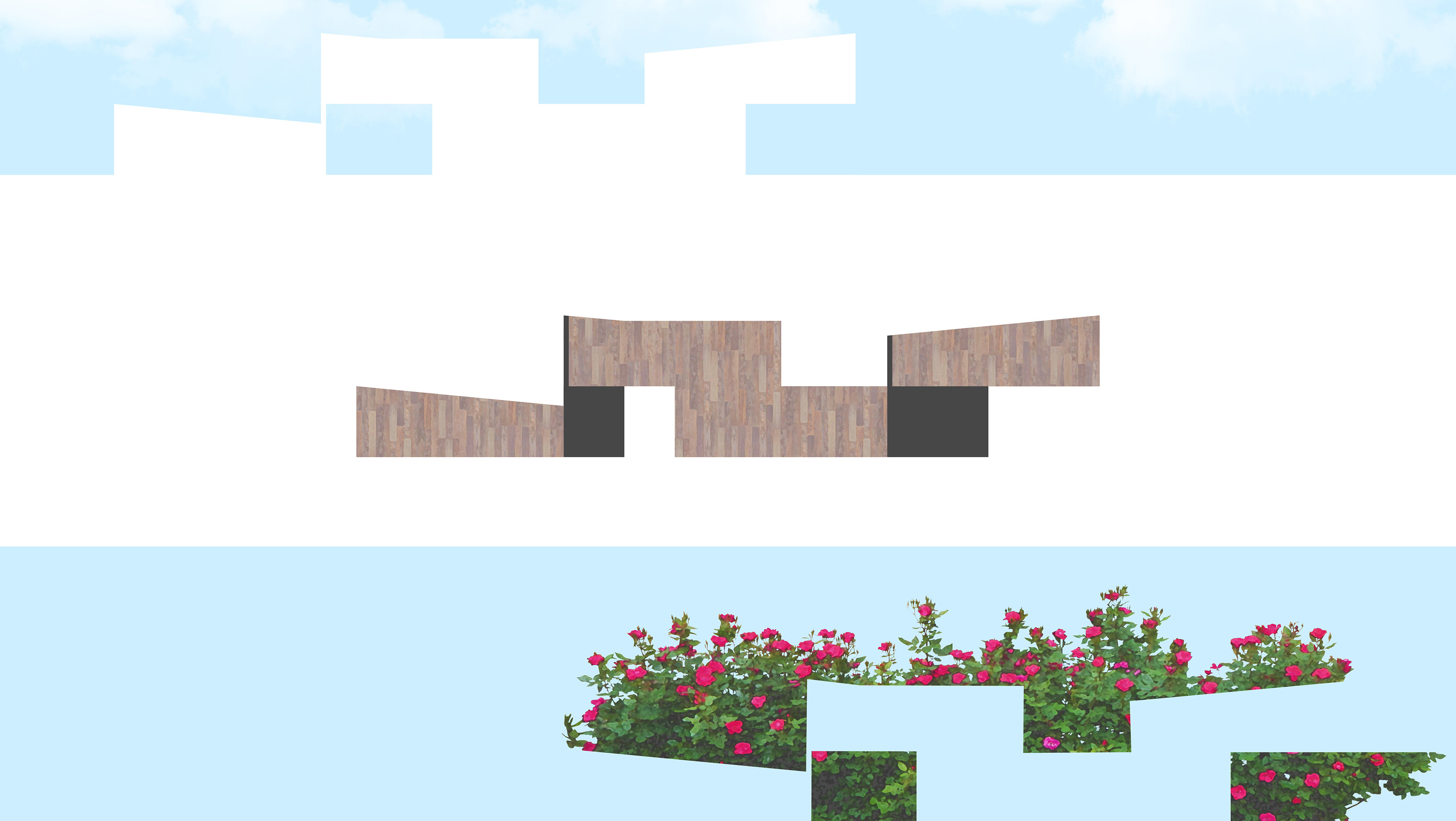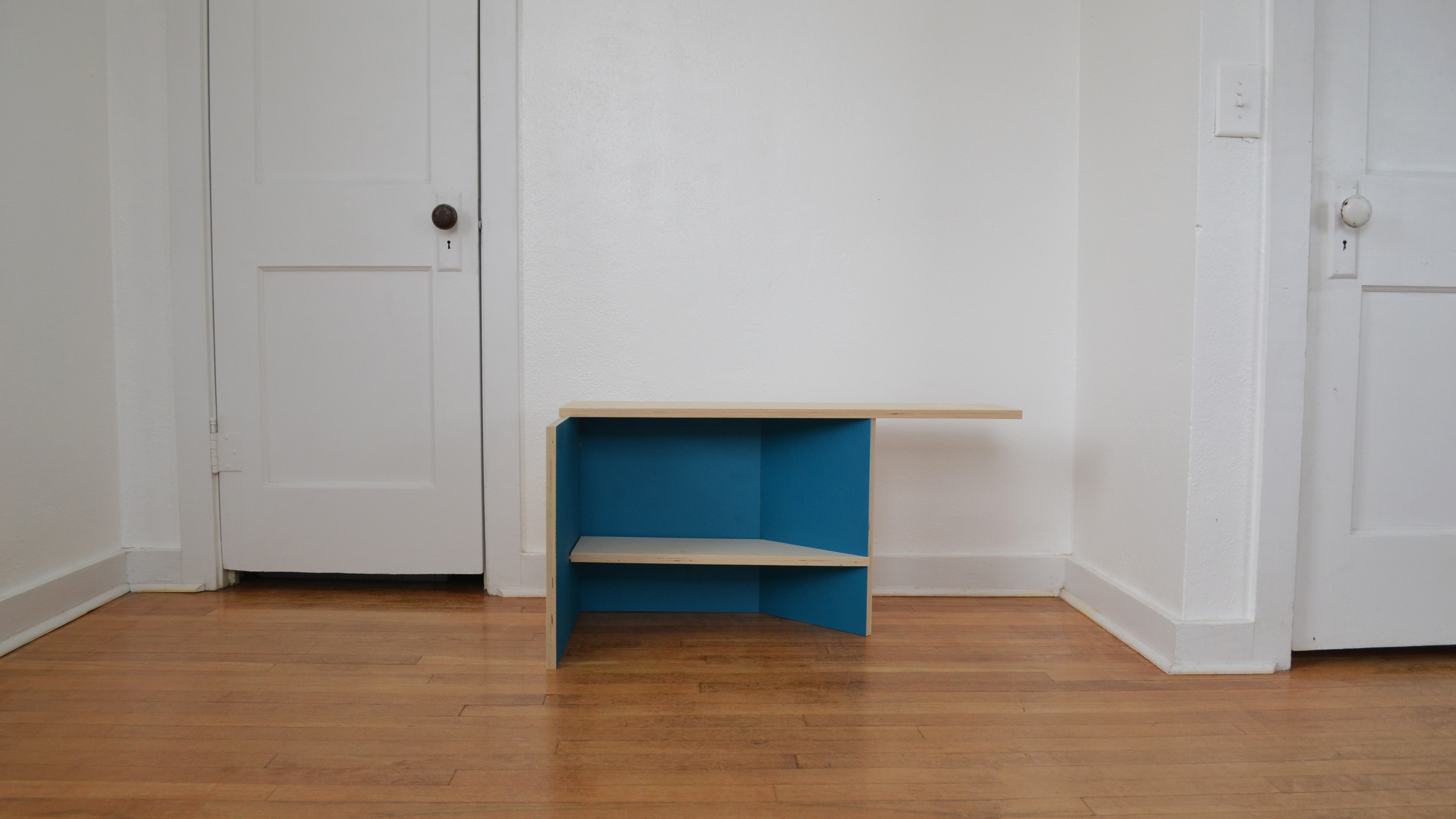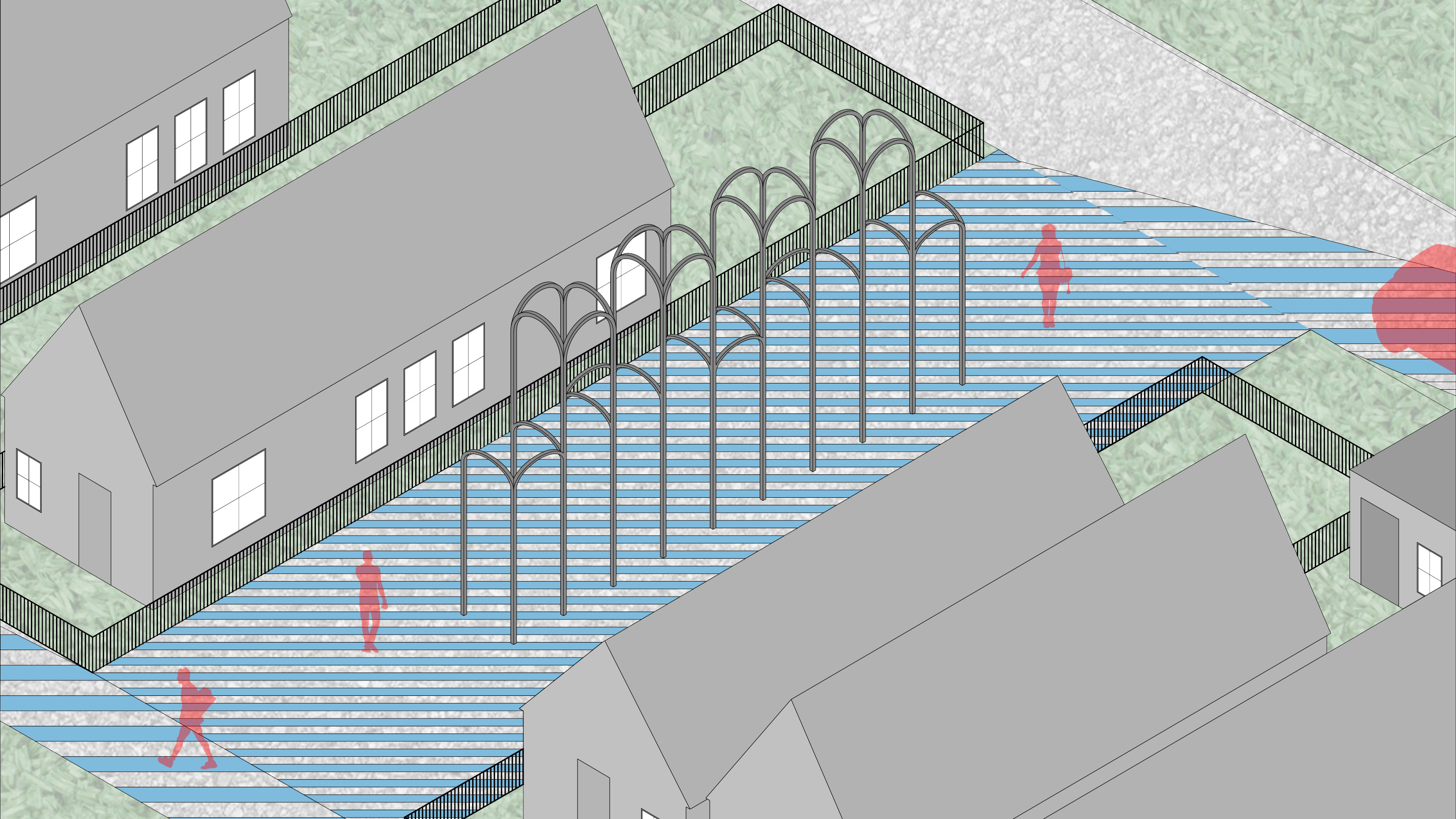This image documented the research outline and main board of found data, missing pieces, in-field interviews, secondary research, and shows our fearless professor helping us make sense of it all.

What does it mean to reConnect these cultures?
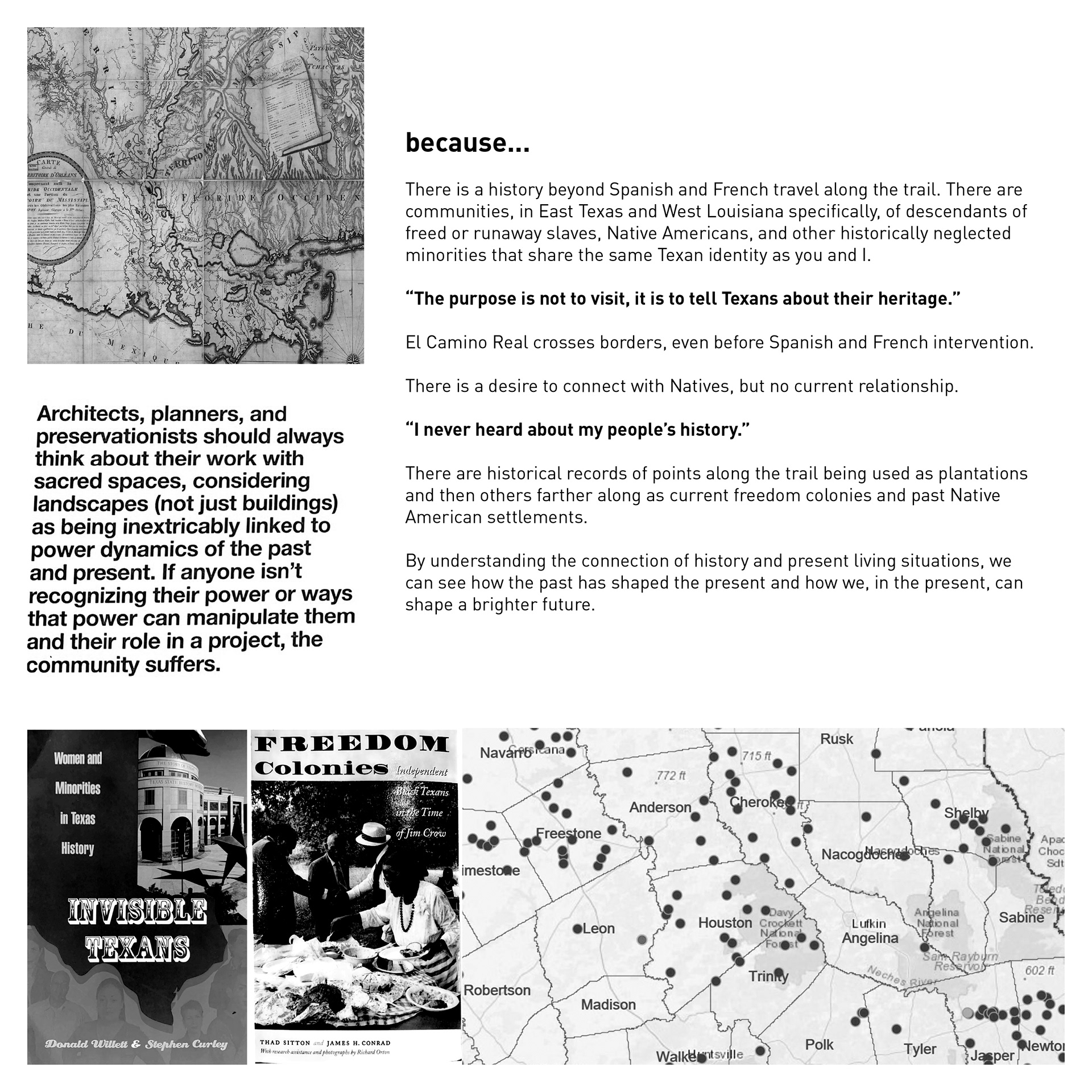
Why should this be important for El Camino Real de los Tejas?
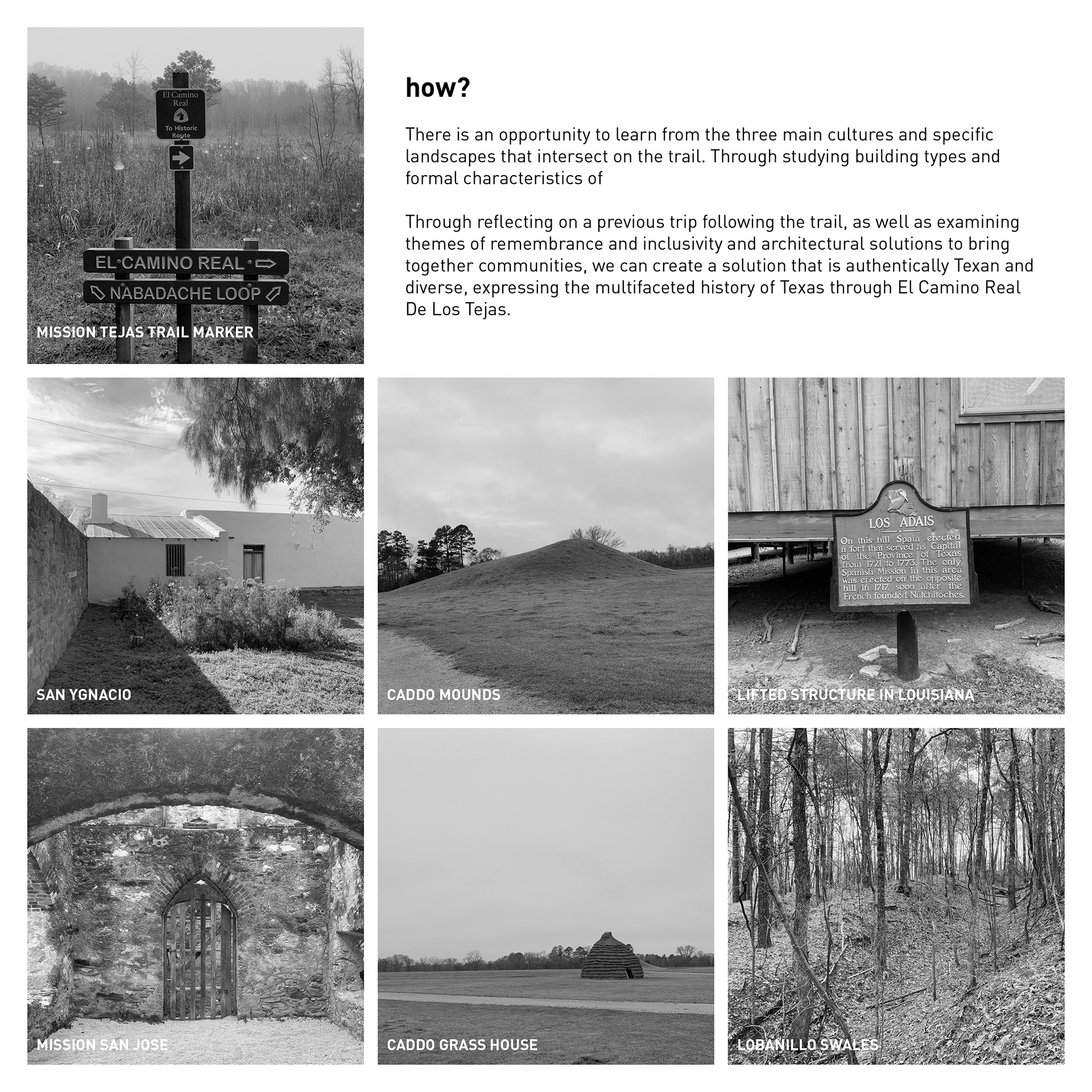
How do we make this happen?

Why is this important for all of us?
I made a map to show the correlation between the trail itself, Underground Railroad routes, and Freedom Colony settlement patterns. I followed this with a site plan and building schematics to convey the layout of one such cultural center. The galleries are divided but unified to highlight each group's contribution to the trail and history of Texas.
Exploded axonometric diagram to depict gallery layout and overall schematic building design.
This section shows the cultural center in context of the highway (the historic trail, today) and the Caddo Grass House and Mounds. This also begins to show the different qualities of each gallery, highlighting the Caddo space specifically, sunken into the earth with an eyeline at exactly ground level to observe the Mounds.
This section shows the character of both the Spanish and Freedom Colony galleries. The Spanish gallery is marked by thick stone walls and skylights, calling back to the many historic Spanish Missions found throughout Texas and the Southwest, and is directly overlooking the trail (highway). The Freedom Colony gallery is raised above the main gathering space, mimicking the stilts that many homes found in the Deep South and Texas Freedom Colonies have, providing a 360 degree view of the surrounding landscape to see the reaches and implications of the choices to settle here, as well as the reasoning to do so to begin with.
The Caddo gallery, overlooking the Funeral Mound. Made with earthy materials for the ground and providing maximum views.
The Freedom Colony gallery, overlooking the trees in the direction of Weeping Mary. Made with woodsy and warm materials to note the history of Freedom Colony construction.
The Spanish Gallery, overlooking the trail (highway). Made with heavy stone and glass to amplify natural light and the sacred feeling accompanied with Old Spanish Missions.
